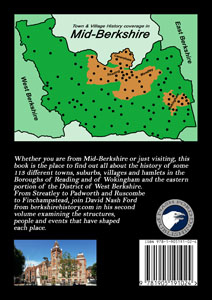 |
 |
||||||||
|
|
Calcot History around an Ancient House
Calcot is the lower part of old Tilehurst parish, lying down by the Holy Brook and the River Kennet, along the Bath Road to the west of Reading. The original village of Calcot Green was some way south of the road, around Calcot Mill. The area became part of the ecclesiastical parish of Theale in 1832 and the civil parish of Theale in 1894 but now stands within the new parish of Holybrook. It is divided into a number of residential areas: Calcot, Beansheaf Farm, Calcot Row, Calcot Place, Horncastle and Ford's Farm. The name Calcot means Cold Cottage – possibly a stopping point where Anglo-Saxons could keep out of the cold on the road out of Reading. Most of the history of Calcot is associated with Calcot Park, the manor house of Tilehurst. In the medieval period, the manor near the church had been a monastic grange of Reading Abbey. After the Dissolution of the Monasteries, it was eventually sold to Sir Peter Vanlore, a Dutch banker working in London, who leant a vast fortune to King James I. He probably built the first Tudor mansion at Calcot. The house later passed to the Zinzans, a family of master-horsemen, who may have altered or rebuilt the house at the end of the 17th century. There is an interesting old story about this mansion which, by the 1690s, had come into the hands of Sir William Kendrick. His eldest daughter and chief heiress was the celebrated 'Berkshire Lady'. The real name of the gentlewoman was Frances Kendrick. She was an extraordinary woman who could ride, hunt, shoot and fence as well as any man. She was also extremely beautiful and her suitors were many. However, she had her sights set on a poor barrister named Benjamin Child who had, unfortunately, taken little notice of her. So she sent him an anonymous letter challenging him to a duel. The confused lawyer arrived at the rendezvous expecting to find some hot-headed dandy. Instead he was faced by a masked lady with a rapier pointing his way. She then posed him the question: "Fight or marry me?" After some deliberation, Benjamin accepted her proposal. He was whisked off to Wargrave, where the two were quickly wed. It wasn't until afterwards, on arrival at Calcot, that Benjamin discovered the identity of his new bride. The two later fell deeply in love and, when Frances died, her husband could not bear to stay at Calcot Park alone. He sold the house to Sir John Blagrave but subsequently found that he could not bear to leave either. The Blagraves had to strip the lead from the roof to literally flush him out. However, the weather did so much damage that they were forced to totally rebuild the mansion (1755) as we see it today. In 1929 when the estate was converted into a golf course. The house is now private residential flats. Read more history of Calcot and other nearby settlements, like Horncastle & Battle, in David Nash Ford's book, 'Mid-Berkshire Town and Village Histories'. Click to Order direct from the Author.
|
||||||||
| © Nash Ford Publishing 2001; Revised 2020. All Rights Reserved. | |||||||||





